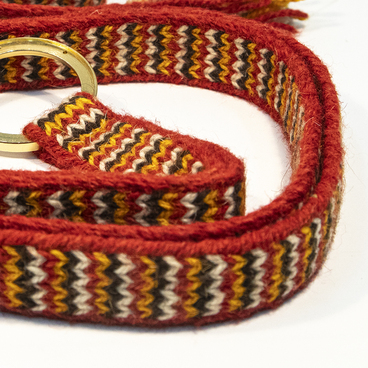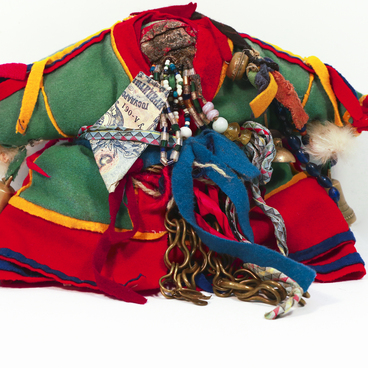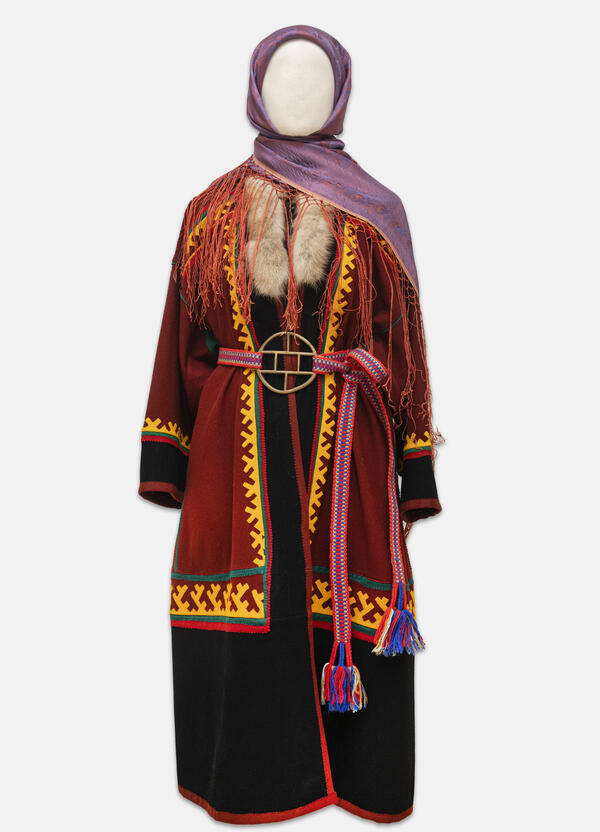Travelers and researchers have always been fascinated with the unique Nenets dolls known as “nukhuko” or simply “uko” in Western dialects. “Nukhuko” means “a toy” in Nenets.
Nukhuko dolls are 5 to 20 centimeters long. Their body is made of an oblong piece of cloth decorated with an odd number of vertical strips. Instead of a head, each doll has a water bird’s bill. Male dolls have a goose’s beak and female dolls — a duck’s bill.
The area where the cloth meets the beak is wrapped around to make a collar. A Nenets doll has no face, legs, or arms. This is a distinctive feature of the dolls made by most indigenous peoples of the North. According to their beliefs, if a doll has a face, it can steal a child’s soul.
Each doll wears an exact replica of Nenets traditional clothing. There are very few differences: for example, the malitsa coats of male dolls are not accompanied by shirts, and the fur panitsas of female dolls are usually decorated at the hem with a single white fur strip. Small pimy boots are sewn to the hem of the outerwear, and strips of cloth or ribbons representing braids are sewn to the head.
The clothing of female dolls is made of cloth or fur and often decorated with mosaic patterns. It may have a white fur collar. Narrow strips of colored cloth pieces or woven threads serve as belts. The clothes of male dolls are also decorated with colorful cloth pieces. A doll family often includes other relatives, such as a baby that is sewn to the mother doll.
Traditionally, Nenets girls sewed their first dolls at the age of five or six with the help of women. By making clothes for dolls, they learned the most important skill for a woman in traditional Nenets society — sewing. A Nenets housewife had to sew not only summer and winter clothing for the whole family but also shoes and the walls of the portable house — the chum.
Girls also make furniture from birch bark and wood, as well as blankets, mats, and household utensils for their dolls. The dolls were not thrown away but kept in special bags called “nukhuko’ pad” or “padko”, which the girls also sewed themselves.
When girls reached the age of marriage, the dolls
became their amulets, bringing good luck to future mothers and wives. Nenets
women did their best not to lose or throw away the dolls, but to pass them on
to the eldest daughter. The older the doll was, the greater its sacred power
was considered to be.




